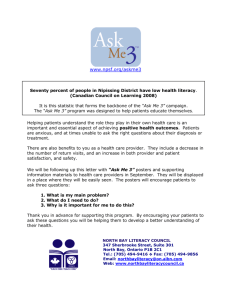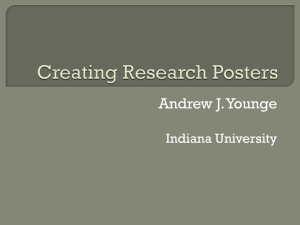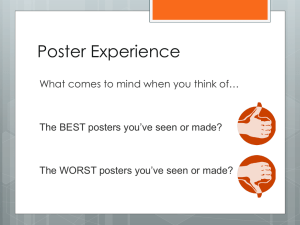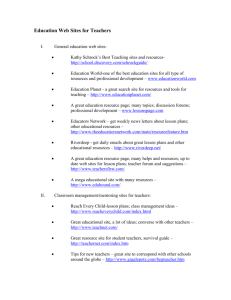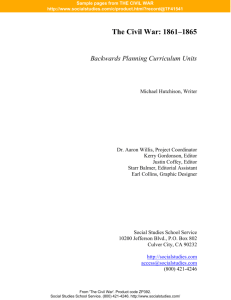sample pages from the teacher's guide
advertisement
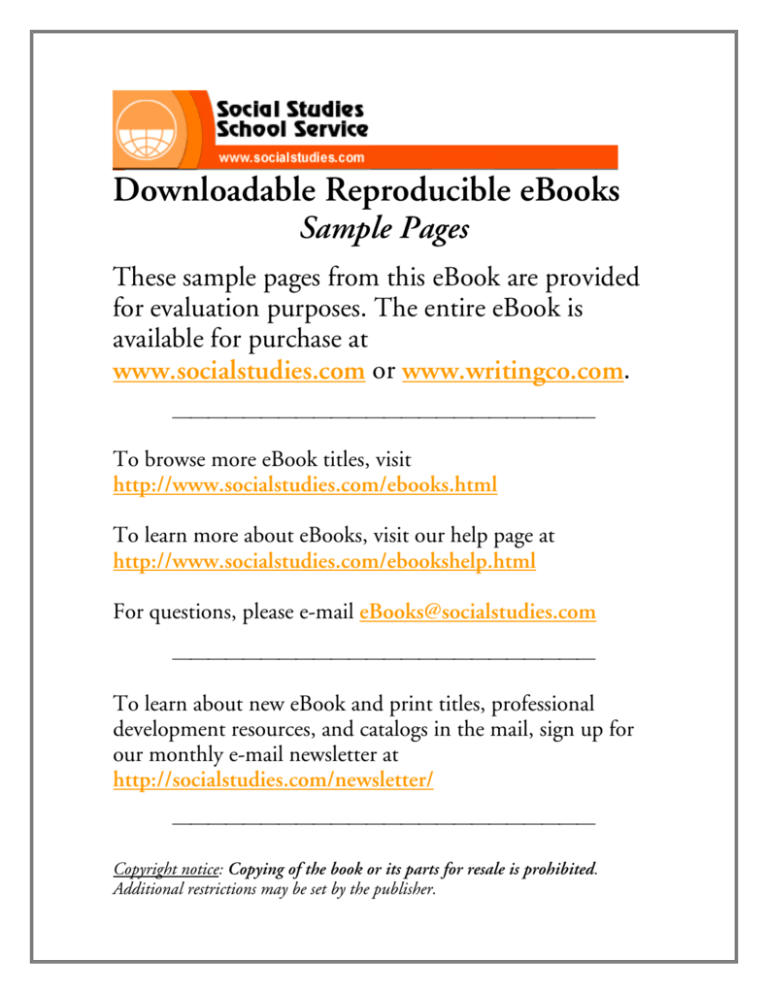
Downloadable Reproducible eBooks Sample Pages These sample pages from this eBook are provided for evaluation purposes. The entire eBook is available for purchase at www.socialstudies.com or www.writingco.com. To browse more eBook titles, visit http://www.socialstudies.com/ebooks.html To learn more about eBooks, visit our help page at http://www.socialstudies.com/ebookshelp.html For questions, please e-mail eBooks@socialstudies.com To learn about new eBook and print titles, professional development resources, and catalogs in the mail, sign up for our monthly e-mail newsletter at http://socialstudies.com/newsletter/ Copyright notice: Copying of the book or its parts for resale is prohibited. Additional restrictions may be set by the publisher. Hungry Planet: What the World Eats Curriculum Guide Based on the book Hungry Planet: What the World Eats by Peter Menzel and Faith D’Aluisio Betsy Hedberg, Writer Colleen Lynch, Writer Kerry Gordonson, Editor Dr. Aaron Willis, Project Coordinator Justin Coffey, Editorial Assistant Christina Trejo, Editorial Assistant Social Studies School Service 10200 Jefferson Blvd., P.O. Box 802 Culver City, CA 90232 http://socialstudies.com access@socialstudies.com (800) 421-4246 © 2007 Social Studies School Service 10200 Jefferson Blvd., P.O. Box 802 Culver City, CA 90232 United States of America (310) 839-2436 (800) 421-4246 Fax: (800) 944-5432 Fax: (310) 839-2249 http://socialstudies.com access@socialstudies.com Permission is granted to reproduce individual worksheets for classroom use only. Printed in the United States of America. ISBN: 1-56004-298-2 Product Code: ZP383 TABLE OF CONTENTS INTRODUCTION........................................................................................... iv POWERPOINT LECTURE NOTES............................................................ S1 POWERPOINT HANDOUTS ....................................................................... H1 CRITICAL THINKING QUESTIONS ........................................................ A1 WRITING PROMPTS ................................................................................... A4 POSTER BASED ACTIVITIES.................................................................... A6 STRATEGIC READING ............................................................................... A25 INTRODUCTION The Hungry Planet posters provide insight into the diets, daily lives, and cultures of 12 families featured in the Hungry Planet book. The posters also reveal the increasing globalization of the world’s food markets, as several of the photographs show American or European brand-name products. By examining these posters, students can learn not only about a family’s food supply and customs, but also about national and global economics and politics. This curriculum guide helps students analyze and understand the posters. As students go through the posters and activities, encourage them to reflect on what they learn about the world’s cultures, international economic and political conditions, and the process of globalization. Also, allow them to reflect on the similarities and differences between the role of food in their own family and in other cultures around the world as seen in the posters. The curriculum guide contains the following components: • A PowerPoint® presentation that features guided discussion questions that help students analyze the 12 photographs, uses animations to break down each photograph into its constituent parts, and provides information about each one • Critical thinking questions based on Bloom’s Taxonomy that get students to delve deeper into the topics and concepts conveyed in the photographs • Poster activities that have students organize and analyze statistical information presented in the posters. Students also complete graphic organizers to assist them with their analyses. • Writing prompts that offer ideas for paragraph and essay topics related to the posters • Strategic reading exercises that have students read passages from the Hungry Planet book and selected Web sites, then complete graphic organizers to help them make sense of what they’ve read These components may be used in any order and combination, depending on your classroom needs. However, we suggest starting with the PowerPoint® presentation, since it provides an overview of each of the 12 countries and their corresponding photographs and allows students to proceed to the subsequent sections with a good basic understanding of the countries. Permission granted to reproduce for classroom use only. © 2007 Social Studies School Service. (800) 421-4246. http://socialstudies.com iv CRITICAL THINKING QUESTIONS Teacher Page These 12 critical thinking questions reflect the six levels of Bloom’s Taxonomy: Knowledge, Comprehension, Application, Analysis, Synthesis, and Evaluation. As the questions progress, they ask students to do more abstract thinking. Questions 1–7 and 9 ask students to focus on one poster. Questions 8 and 10 ask students to compare two posters. You may choose which posters you would like them to focus on or allow them to select the posters. Questions 11 and 12 ask students to make evaluations based on an examination of all the posters. You may wish to modify these questions so that students only choose from a selection of the overall group of posters. For example, you could have students decide which of two families’ diets they think is healthiest (question 12). All of these questions may be answered in either short- or long-answer form. You may also choose to combine several questions into a single essay assignment. Permission granted to reproduce for classroom use only. © 2007 Social Studies School Service. (800) 421-4246. http://socialstudies.com A1 CRITICAL THINKING QUESTIONS Student Worksheet KNOWLEDGE 1. Name two types of food you recognize and two you do not. 2. Identify all of the beverages in the photograph. COMPREHENSION 3. Distinguish between foods the family has purchased in a store or supermarket and foods they may grow or make themselves. Place the foods into two categories: “store bought” and “homemade.” 4. Describe what appear to be the family’s staples in the following categories: grains and starches, fruit, and protein. APPLICATION 5. Imagine that you visit this family and they ask you what you would like for dinner. Plan the menu, based on what you see in the photograph. 6. For each of the following categories, calculate the amount of food each family member eats in one week: fruit, bottled beverages, meat, and sweets. (Not every photograph contains food from all of these categories.) ANALYSIS 7. What does this family’s food supply reveal about its standard of living and the circumstances of the family members’ lives? 8. Choose two posters. Compare and contrast the amount of food and beverages each family member consumes in a week and the types of foods that are most prevalent in the families’ diets. SYNTHESIS 9. Imagine that this family joins you and your family for dinner at your home. Predict what the members of that family would say to each other about this meal when they returned home. 10. Choose two posters. Imagine that these two families could cook a meal together. This meal would include some of the foods each family customarily eats and would allow the families to educate one another about their culture and lifestyle. What do you think would be on the menu? What might this meal teach each family about the other family’s culture and lifestyle? Permission granted to reproduce for classroom use only. © 2007 Social Studies School Service. (800) 421-4246. http://socialstudies.com A2 EVALUATION Look at all of the posters to answer these two questions: 11. Imagine that you are looking for a unique and educational dining experience in the intimate setting of another family’s home. Which family do you think could best provide you with this experience? Why? 12. Which family do you think has the healthiest diet overall? Why? Permission granted to reproduce for classroom use only. © 2007 Social Studies School Service. (800) 421-4246. http://socialstudies.com A3 WRITING PROMPTS 1. Choose three families from three different continents. Compare and contrast the types of food and beverages they consume. Explain some of the reasons for the similarities and differences you notice. 2. Select the family whose life you feel differs the most from your own. Compare and contrast your own diet, kitchen, and methods of food preparation to those of this family. Despite the differences between your family and this one, are there any significant similarities? 3. Imagine that you can go shopping for a week’s supply of food with one of the families in the posters. Describe which family you would choose to shop with, and why. What questions would you have during the shopping process? What do you think you might learn? 4. Imagine that one of the families you have learned about visits another of the families. The visiting family brings some of its favorite foods to share. During their visit, the families cook and eat a meal together, combining some common foods from each family’s traditions. Write some dialogue that these two families might have as they eat their meal. What might they talk about? What might they learn from each other? 5. about the family’s culture based upon what you see in the picture. For example, what do you notice about the types and varieties of foods and beverages available, or the furnishings in the family’s kitchen or dining room? What do these features tell you about the culture? You may include information from the statistics to support your answers. 6. In the foreword to the Hungry Planet book, Marion Nestle writes, “The particular foods purchased or acquired by each family reflect cultural traditions, of course, but they also demonstrate how diet, nutrition, and health depend on less controllable matters, such as poverty, conflict, and globalization.” Choose one poster that reflects these “less controllable matters.” How does the economic and/or political situation in that country have an impact on what you see in the photograph? You may want to do some research on this country to help answer this question. 7. Describe at least four things you have learned by examining these posters. What have the posters taught you about other cultures and countries? What have they taught you about your own culture? 8. What evidence of globalization do you see in the posters? Use information from at least three posters to support your answer. 9. Imagine that you are a professional nutritionist. A family has invited you to analyze its diet in terms of its nutritional content and overall healthiness. Choose one family Permission granted to reproduce for classroom use only. © 2007 Social Studies School Service. (800) 421-4246. http://socialstudies.com A4 to analyze, and write about your findings. Before beginning, you may want to conduct some research on basic nutrition and healthy eating. 10. Marion Nestle writes in the foreword to Hungry Planet, “It is a gorgeous book, but also a rich and thoughtful commentary on today's human condition.” Reflect on this statement. What do the posters you have looked at reveal about the overall “human condition”? Permission granted to reproduce for classroom use only. © 2007 Social Studies School Service. (800) 421-4246. http://socialstudies.com A5 POSTER-BASED ACTIVITIES Country Statistics: Definitions/Explanations Annual health care expenditure per capita ⎯ The average amount of money spent in one year on each person for health care by both public (i.e., the country’s government) and private sources combined. The number is given in U.S. dollars at an average exchange rate.1 Body mass index (BMI) ⎯ A ratio comparing weight to height commonly used in classifying overweight and obesity in adult populations and individuals. It is defined as the weight in kilograms divided by the square of the height in meters (kg/m2).2 Daily caloric intake per capita ⎯ The amount of energy (measured in kilocalories, but referred to simply as “calories”) contained in the food a person consumes each day. Therefore, daily caloric intake per capita is the average number of calories any given person in a specific country takes in each day. A range of 2000 to 2500 constitutes the normal number of calories needed to sustain the human body. Life expectancy ⎯ The average number of years from birth that a person can expect to live. Obesity rate ⎯ The percentage of a country’s adult population (15 years and older) that is considered obese—as opposed to simply overweight—according to body mass index (BMI). The World Health Organization defines both obesity and overweight as abnormal or excessive fat accumulation that may impair health. Though closely related, the difference is a matter of degree: an overweight person has a BMI of 25–29.9, while an obese person’s BMI reaches 30 or above. An average BMI lies between 18.5 and 24.9.3 Population ⎯ The number of people who live in a specific area. 1 http://www.who.int/whr/2006/whr06_en.pdf http://www.who.int/mediacentre/factsheets/fs311/en/index.html 3 http://www.who.int/mediacentre/factsheets/fs311/en/index.html 2 Permission granted to reproduce for classroom use only. © 2007 Social Studies School Service. (800) 421-4246. http://socialstudies.com A6 Poverty line ⎯ The minimum level of income deemed necessary to achieve an adequate standard of living. The poverty line may differ from country to country; the poverty line in a “developed” nation is generally set higher than that of a “developing” nation. National estimates of the percentage of the population falling below the poverty line are based on surveys of subgroups, with the results weighted by the number of people in each group.4 4 https://www.cia.gov/cia/publications/factbook/docs/notesanddefs.html#2046 Permission granted to reproduce for classroom use only. © 2007 Social Studies School Service. (800) 421-4246. http://socialstudies.com A7 A8 80.0% not available JAPAN $317.25 127,333,002 not available 31.7% $10 INDIA $39.27 1,095,351,995 Daily caloric intake Percentage below poverty line Annual health care expenditure 1.5%/1.9% not available $2627 1.1%/0.9% 2459 25.0% not available Daily caloric intake Percentage below poverty line Annual health care expenditure 2761 85.3/78.4 65.6/63.9 Life expectancy (F/M) Obesity (F/M) Cost of food per week Population 1.3%/0.3% 13.1%/5.3% 2114 49.3/46.1 9,944,201 2,279,723 62.4/60.2 CHAD 25.60 BHUTAN $34.09 Life expectancy (F/M) Obesity (F/M) Cost of food per week Population POSTER-BASED ACTIVITIES $580 not available 3010 53%/30% 78.3/76.1 2,418,393 KUWAIT $221.45 not available 10.0% 2951 1.9%/1.6% 74.5/70.9 1,313,973,713 CHINA $59.23 not available 64% 2174 6.2%/0.6% 51/47 11,956,788 MALI $26.39 not available 41.0% 2754 15.4%/6.1% 79.4/73.6 13,547,510 ECUADOR $34.75 not available 40.0% 3145 34.5%/24.0% 78.3/72.6 107,449,525 MEXICO 189.09 $3204 not available 3496 19.2%/19.7% 81.6/75.6 82,424,609 GERMANY $500.07 not available 12.0% 3774 42%/36.5% 79.8/74.6 301,065,000 USA $341.98 not available 56.2% 2219 29.5%/16.0% 71.2/67.7 12,293,545 GUATAMALA $79.82 Country Statistics

